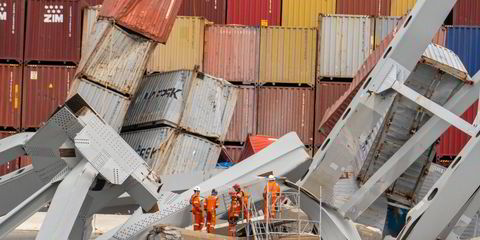ExxonMobil and Qatar Petroleum International have been given approval to export US-sourced LNG from their Golden Pass import terminal (pictured) to US free trade partners.
The consortium acknowledged, however, that they have a lot more work to do before they reach the stage of a final investment decision
“We have got a ways to go. A lot more studies to do,” Richard Guerrant, vice president LNG ExxonMobil Gas & Power Marketing, told a Gastech audience in London this week. He added, though, that he is optimistic about the viability of the proposed $10 billion project.
Guerrant predicted robust growth in global gas demand that will give the partners reasonable rates of return on their investment.
While ExxonMobil operates a string of LNG trains in Qatar in partnership with Qatar Petroleum, the US LNG project would be the first such joint venture with QPI, a sovereign Qatari fund charged with investing in overseas projects on behalf of the Persian Gulf state.
The group, Golden Pass Products, hopes to export up to 15.6 million tonnes per annum of LNG from a liquefaction facility proposed for the site of its existing import terminal near Sabine Pass.
The latest Department of Energy approval allows Golden Pass to export to countries that hold a free trade agreement with the US.
The partners have an application pending with US regulators for approval to export to any country in the world. The project is expected to take five years to build once it receives all the required federal permits.
Guerrant said ExxonMobil is also looking to invest in LNG production in western Canada.
“We are evaluating if it makes sense for us to pursue a project on the West Coast of Canada,” he said.
“We see plenty of resource to provide for the domestic market as well as to have a very healthy export market out of both the US and Canada.’’
Growing worldwide demand for gas plus declines from existing fields mean that more LNG plants are needed, he said.
“We have lots of decline of existing production around the world and that is opening up a gap that has to be filled, and the large part of that is LNG.”



